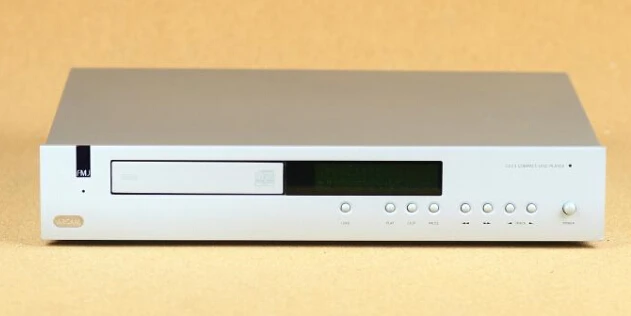Even if we exclude the several other brand names (Mission, Meridian, Marantz, and others) that utilize the Philips chassis and mechanism, Philips had always maintained a commanding position in the sales numbers for CD players in Europe from their collaborative creation for the format (alongside Sony, of course).
They had a tendency to focus their efforts on popularizing the CD format through a series of low-cost, feature-lacking players such as the CD104, CD150, and so on. The Philips CD960 model, which came in at a higher price point (L699.00), was clearly aimed at the more esoteric end of the market, and it did in fact compete with the few top machines (costing up to £2,000) in terms of sound quality and operational variety.
Needless to say, it utilized the same 16-bit, four-times oversampling circuitry that had enhanced the technical standards of all Philips players which preceded it. Of course, it contains Philips’ specialty feature, FTS (Favorite Track Selection), which remembers all of the specific track numbers you’ve noted on your discs and selects them whenever you put the disc back in the player.
The battleship-like architecture of this new Philips CD960 contributes to its flagship image, and the “Made in Japan” label on the back panel was a pleasant sight to see. It weights in at more than 10kg, and the cheap models’ widespread use of plastic materials has given place to a die-cast chassis and high-quality transportation components.
The disc drawer glides in and out at a brisk pace, but it’s not the only thing that glides. A second drawer at the center of the projecting front panel opens to display a cluster of the less often used controls. The Index number, forward and back skip keys, a Scan button for automatically sampling the first 10 seconds of each track in turn, a Repeat button and an associated A-B button for marking chosen begin and finish points for repeat play of a musical ‘loop,’ and a Mode switch that selects Normal Play, Single Play (play stops at the end of the current track), Copy Pause, and a Mode switch that selects Normal Play, Single Play (play stops at the end of the current track), Copy Pause (play stops at the end of each track until Pause is pressed).
The 0-9 numbered buttons and a Select key for track selection are on the front of this slide-away control drawer. With the exception of the FTS key, the remaining control keys are all quite standard. There is a conventional jack-socket for headphones with a slider volume control (but sadly no control on the main output volume).
The display panel is extremely extensive, with the ability to switch between the standard Track elapsed time show and the total time remaining display. The fast search function has three speeds, the slower two of which provide aural cueing depending on how long you hold the button down. It is possible to conduct even more complex routines after carefully reading the very detailed booklet, such as starting from a specific time cue or storing specific start and stop time cues.
With rapid cueing and numerous confirming legends blinking back at you from the display panel, the cordless remote control device duplicates all of the essential operations and delivers a fine sense of power. A digital outlet (for sending to an external digital processor or future advancements such as CD-ROM), remote control sockets (for connecting an alternate control unit), and an optical outlet are all located on the back panel, in addition to the normal pair of phono analogue output connectors (for digital processing via a fiber optics connector).
Even when the claimed and measured specification details differ only microscopically between one player and another, I continue to conduct measurements on every CD player that comes my way, and any differences in subjective sound quality are due to subtleties in the time domain signal processing and the varying effectiveness of the error concealment arrangements.
Despite the fact that the frequency plot is so straight-line that it defies the human eye and ear to find fault with it, my findings reveal that this Philips CD960 is a significant improvement over their early 14-bit models (where high-frequency ripple can be detected) and many non-oversampling players (where there is a noticeable high-frequency droop).
Similarly, to display the Philips CD960 crosstalk response, which remained below the 100dB line throughout the spectrum, I had to scale down by 10dB. In addition, my results table indicates a signal-to-noise ratio of 104dB unweighted and distortion of 0-0025 percent (at full level). The square-wave response was symmetrical, with no overshoot, as expected from an oversampling filter.
This player is similarly impressive in terms of mechanics. During play, mechanical noise is kept to a minimum at all times, and the ability to track through external impacts or feedback is exceptional. With only two seconds between cues, access time is quick, and the facilities for smooth disc-jockey type operation are nearly optimal.
After admitting that subjective quality variations are usually modest and unrelated to anything as obvious as the measured frequency response, I quickly realized that the Philips CD960 exceeded even the pleasant standards we associate with previous Philips models. The overall quality is unremarkable and laid-back, but further listening reveals a level of neutral naturalness that I seek in musical signal sources.
The entire frequency range is covered but not overly so, and the depth of perspective on well-recorded choir and orchestra, for example, is rather amazing. Solo voices and instruments have that “in the room with us” quality, while dynamics are handled without feeling strained.
Allow time for a lengthy listening and testing session if you go shopping for this player, and you will understand exactly what I mean. This is a true high-fidelity machine.







